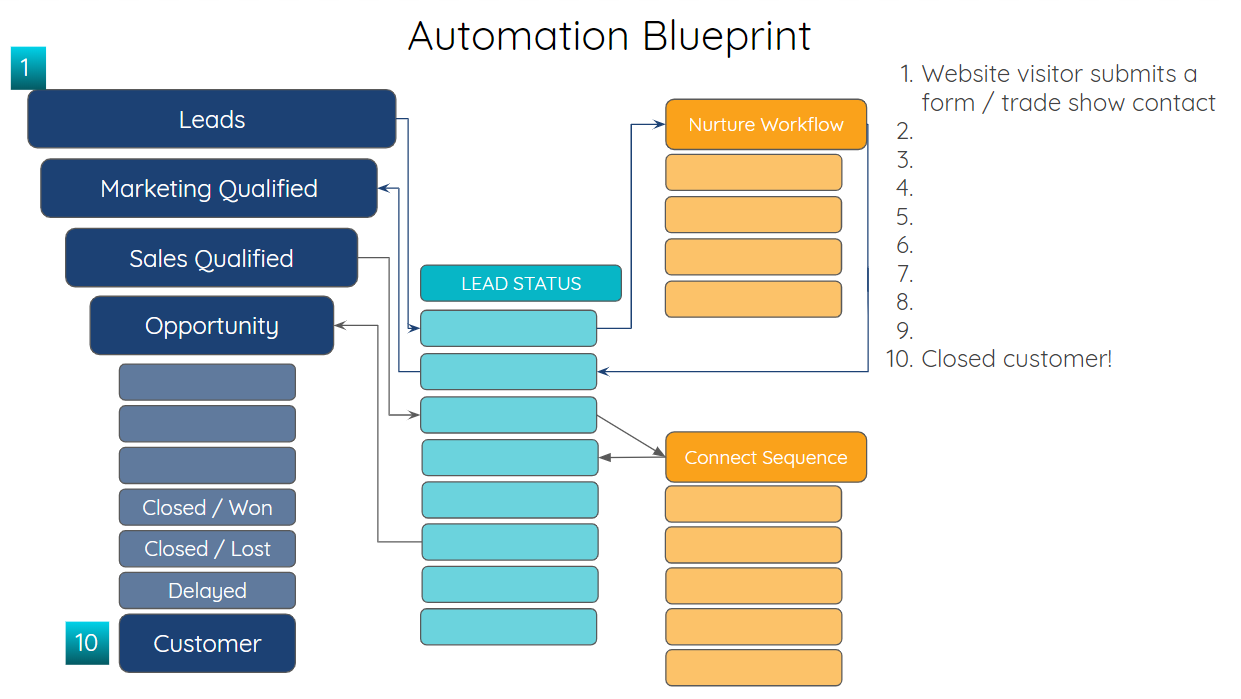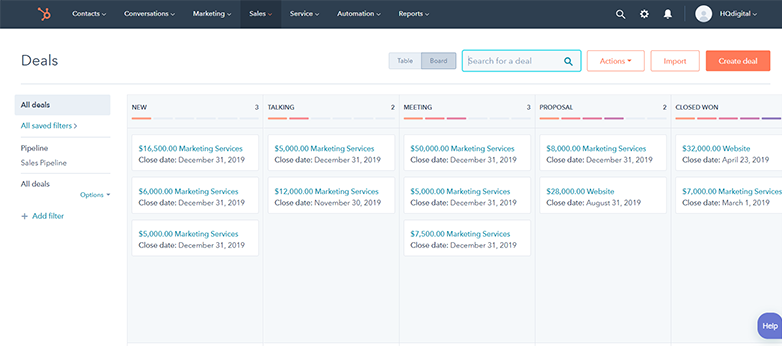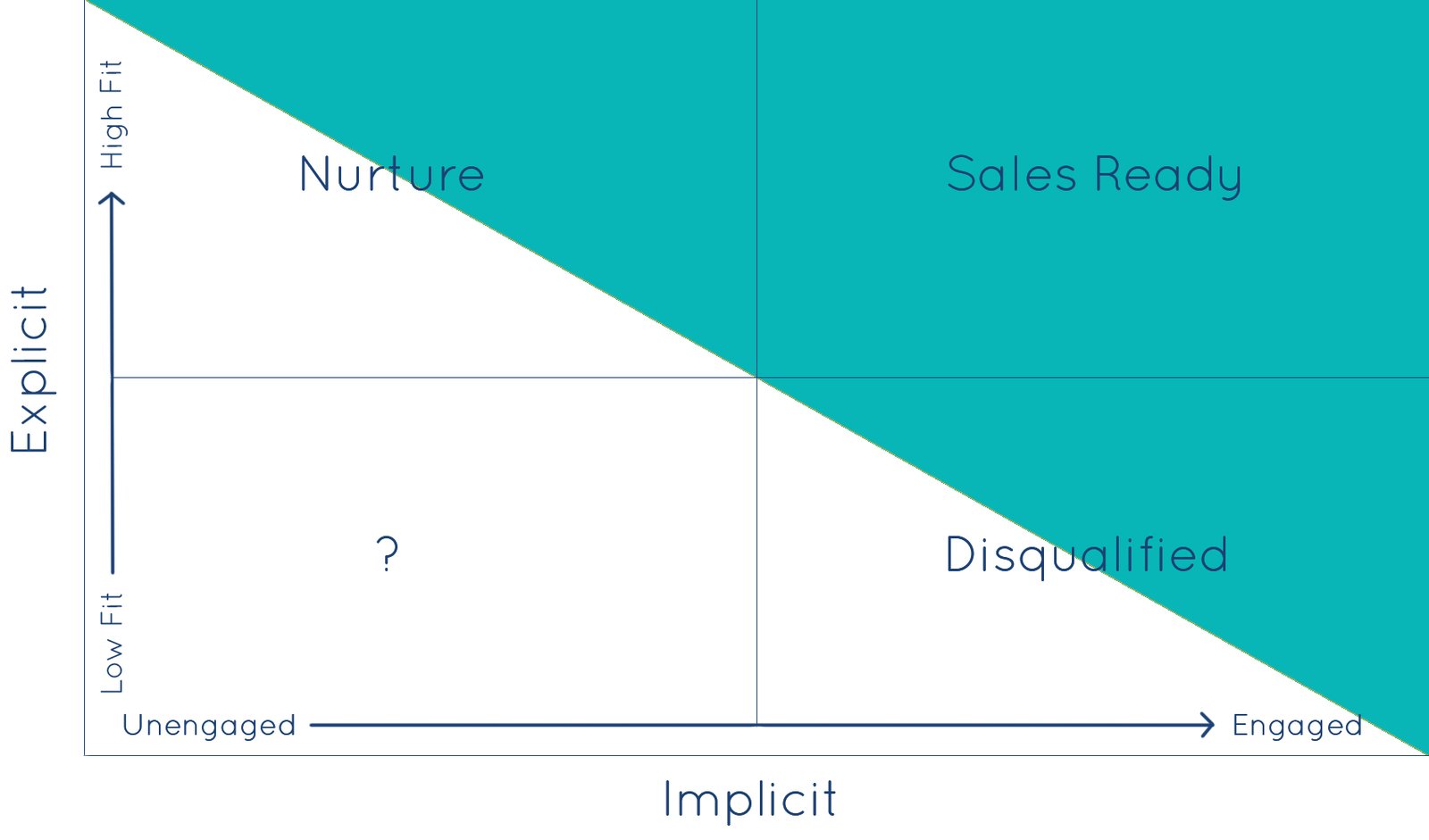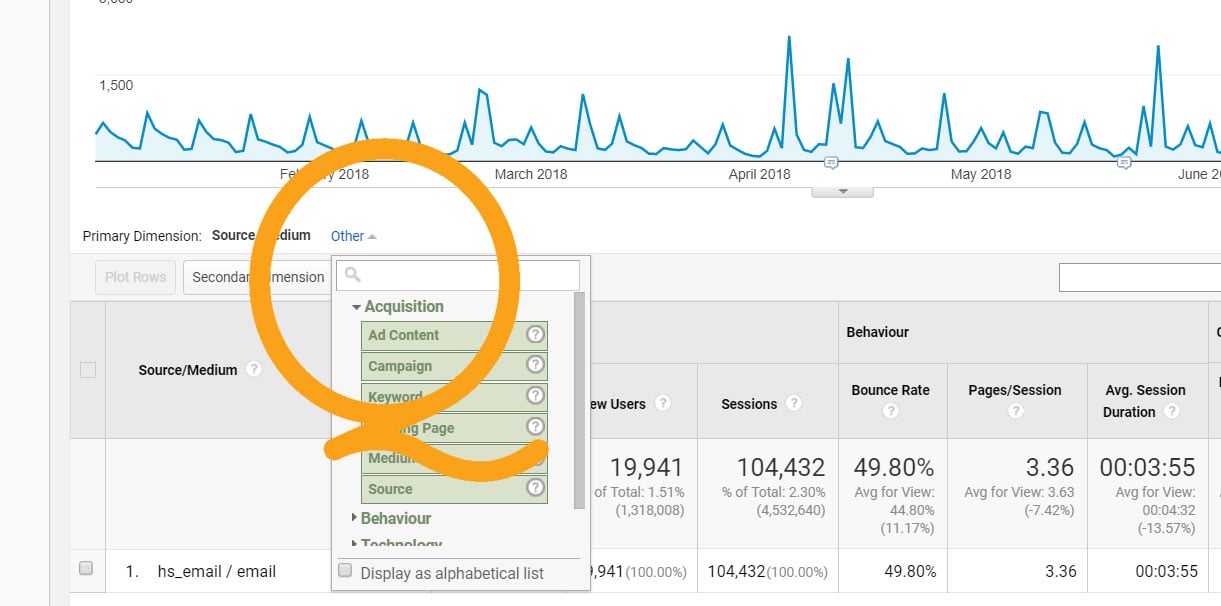
Curious which of your ads are leading to revenue? Want to know which channel has the highest conversion rate?
UTM parameters allow you to measure and analyze your website conversions at a more granular level, providing marketers a great way to track the effectiveness of their channels, campaigns, and content.
UTMs provide you with significantly more visibility into your revops metrics. When you capture and report on UTMs in HubSpot, you're able to:
- Identify the specific assets, ads, and campaigns that are driving the most revenue
- Uncover the source of a specific conversion, i.e. how your prospect got to your website for the specific conversion session
- Enhance your multi-touch attribution
By simply adding hidden fields on your forms and including some additional information in your URL link, you can quickly and easily begin capturing this essential data.
What are UTM parameters?
UTM stands for Urchin Tracking Module. Urchin was a data and analytics company that Google acquired in the early 2000's. Since then, UTMs have become the industry standard for tracking additional information on links. There are five primary UTM properties:
- utm_source
- utm_medium
- utm_campaign
- utm_content
- utm_term
Each of these properties stores a different piece of information about where a visitor came to your site from or what ad they clicked.
Example: Google Ad with UTM Parameters
Below is an example of a link for a Google paid search ad with utm parameters included:
hq-digital.com?utm_source=google?utm_medium=cpc?utm_campaign=fall_demos?utm_content=schedule_now_link?utm_term=searchterm
UTM_source
The source identifies the site where the visitor clicked from to land on your site. This could be "Google" or "Bing" for search, and "LinkedIn" or "Facebook" for social. This could also be hs_email for links in emails.
hq-digital.com?utm_source=google?utm_medium=cpc?utm_campaign=demo?utm_content=schedule_now_link?utm_term=searchterm
UTM_medium
The medium indicates what type of link is used. This could be a cpc link or an email link.
hq-digital.com?utm_source=google?utm_medium=cpc?utm_campaign=demo?utm_content=schedule_now_link?utm_term=searchterm
UTM_campaign
Campaign desgnates the specific ad campaign or promotion. "Case Study" or "Fall Webinar" are examples of campaign values you might include. Here we are using "demo"
hq-digital.com?utm_source=google?utm_medium=cpc?utm_campaign=demo?utm_content=schedule_now_link?utm_term=searchterm
UTM_content
Content identifies the specific link that was clicked. On a website, it might be "banner" or "CTA-link." In an email it might be "top button" or "inlined-link."
hq-digital.com?utm_source=google?utm_medium=cpc?utm_campaign=demo?utm_content=schedule_now_link?utm_term=searchterm
UTM_term
Term is specific to paid ads, and will capture the searched keyword, when available.
hq-digital.com?utm_source=google?utm_medium=cpc?utm_campaign=demo?utm_content=schedule_now_link?utm_term=searchterm
How to Create UTM properties in HubSpot and Add Them As Hidden Form Fields
To utilize UTMs with your HubSpot CRM, you will first need to create the properties and then add them to your forms. These must all be single-line text properties:
- utm_source
- utm_medium
- utm_campaign
- utm_content
- utm_term
Once you've created the properties, they must be added to every form where you want to enable capturing UTM values - and be sure to set all of the fields to be hidden. The form will automatically capture any UTM parameter values from the URL of the page and include them with the form submission. So the details of your ad gets pushed over, and this makes your analytics and your ad sources very easy to track within your HubSpot portal.
HubSpot Pro Tip: Our HubSpot revops experts recommend adding as deal property as well, can copy at the time that the deal is created.
Reporting UTM data in HubSpot
You can use custom reports to analyze your UTM data. Start by creating a new custom contacts report and setting a filter on the report for "utm_source" is known. This isolates your contacts that have UTM data values that were captured at form submission. On the data tab, add all five UTM properties, and then drop one of them into the report along with "count of contacts." This will let you quickly group your contacts by UTM values. Using the HubSpot drill-down button, you can further analyze these reports.
Duplicate this report four times if you want to create a similar report for each UTM property. You can also include a date range to further segment and analyze your leads.
Below is a list of the other reports in the dashboard:
- utm_source=paid_search broken out by utm_campaign
- utm_source=paid_social broken out by utm_campaign
- utm_source=organic_social broken out by utm_campaign
- utm_source=organic_search broken out by utm_term
- utm_source=paid_search broken out by utm_campaign
- utm_campaign=NAME_OF_CAMPAIGN broken out by utm_content
There are an infinite number of additional reports that can provide insights into the performance of your marketing content.
Customize UTM Parameters for Emails in HubSpot
In addition to using UTM parameters for tracking links in your website content, you can also customize UTM parameters for emails in HubSpot. This allows you to gain even more insights into the performance of your email campaigns and track the effectiveness of different elements within your emails.
To customize UTM parameters for emails in HubSpot, you first need to change the settings of your email tracking. By default, HubSpot includes its own set of UTM properties on every email link. In your portal settings, there are two additional options:
- Add source tracking only if no existing tags in URL
- Don't add source tracking tags
We don't recommend the last option, just in case you ever forget to include UTM links yourself.
To create the custom UTM links, you can HubSpot tracking URL builder tool in your portal. This will help provide consistency and the tool even shortens the URL for you!
What are UTM parameters? (Reminder)
To analyze the UTM data from your email campaigns, you can create custom reports in HubSpot. Similar to the process for website links, you can create a custom contacts report and filter for contacts where "utm_source" is known. You can then add the UTM properties to the report and analyze the data by grouping contacts based on their UTM values.
By customizing UTM parameters for emails and analyzing the data in HubSpot, you can gain valuable insights that will help you optimize your email marketing strategy. Whether you want to test different sources, mediums, or campaigns, or track the performance of specific links or keywords, customizing UTM parameters for emails allows you to take your email analytics to the next level.
Additional FAQs About UTMs in HubSpot
Where are the UTM properties in HubSpot?
Good question, they actually aren't in HubSpot until you make them! You will want to create five new single-line text properties, using the standard UTM parameters as your property labels and internal values. And don't forget to add them to all of your forms as hidden fields. It is better to have them there and not use them, than to miss a piece of valuable data on submissions.
I'm already reporting by Original Source. Do I really need this, too?
Short answer: Adding UTMs with HubSpot custom properties and forms is required for the most accurate attribution.
Long answer: Probably. HubSpot captures first touch attribution, that is, how someone enters your CRM database, on the property Original Source (and some additional details on Original Source Drill-Down 1 and Original Source Drill-Down 2). However, this is often only part of the story and journey of your prospect, as the Original Source property will not capture information about how a known contact returns to your site.
Say a new visitor submits a form to access a gated piece of content, and then returns to your site after seeing and clicking on a retargeting ad or social post. If they then convert via a form on that second visit, the UTMs would be captured in the form submission, and you would be able to attribute the second conversion to the source and campaign of the ad.
Another reason that UTMs are essential for accurate attribution is because UTM values play a significant role in how HubSpot determines Original Source.
How do I add UTMs as hidden fields to my form?
After you've created the properties, you can add them using HubSpot's form builder. Make sure to make the fields hidden, or else they will be shown to your visitors!
Will UTMs work with non-HubSpot forms?
Yep! As long as you create the properties in HubSpot, they will behave like any other property on a non-HubSpot form and be captured if the tracking code is present on the page.
What about other hidden fields, like FBCID or GCLID?
Most ad platforms now have their own token or ID that is used to anonymously track your website visitors. Just like with UTMs, if you create these as custom properties in HubSpot and include them in your form, you will be able to automatically capture this information into your CRM via the form submission. There are actually a whole group of additional ad properties that can be used for even more reporting and attribution.
How do I stop the values from being over written each time a form is submitted?
To prevent our initial attribution data from being overwritten and lost, we recommend creating an additional set of five properties and then using workflows (with re-enrollment OFF) to copy over the captured utm values. This effectively creates a set of "most recent touch UTM" and "original touch UTM."
You can also create reports using criteria such as "value has ever been equal to" in order to further analyze your UTM data.








